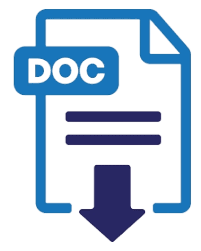AN ANALYSIS OF HUMOR SPEECH ACT OF THE BIG BANG THEORY AT CBS TELEVISION SERIES
English Department, Faculty of Letters and Culture, Universitas Gunadarma
Indonesia
Abstract
Some of the problems faced by students in learning English are speech acts. This research focused on finding the speech acts. This study aims to get an overview of humor speech acts of the big bang theory. The qualitative descriptive approach will be used along with the content analysis technique. The result shows that: (1) there are three parts of speech acts used, including locutionary, illocutionary, and perlocutionary acts, (2) there is a violation of quantity, quality, relevance, and manner maxim. However, the most violation maxim was at the quantity maxim, (3) the screenwriters intentionally create a dialogue with several principles’ violations of speech acts, team-works, and humor categories. It can be concluded that the speech acts humor of the big bang theory screenwriters intentionally made some mistakes to create humor to raise up the jocularity atmosphere that can be enjoyed by the viewers. It is expected that this research can enrich the knowledge as regard the linguistic phenomena especially those which are related to speech acts.
Keywords
References
Corredor, C. (2020). Deliberative speech acts: An interactional approach. Language and communication, 71, 136–148. https://doi.org/10.1016/j.langcom.2020.01.005
Elizabeth, B. (2006). Pragmatics stylistics. Edinburg: Edinburgh University Press.
Ephratt, M. (2012). “We try Harder” silence and grice’s cooperative principle, maxims and implicatures. Language and communication, 32(1), 62–79. https://doi.org/10.1016/j.langcom.2011.09.001
Grice, H. P. (1975). Logic and conversation, Syntax and semantics, Speech Act. New York: Academic Press.
Khosravizadeh, P., & Sadehvandi, N. (2011). Some instances of violation and flouting of the maxim of quantity by the main characters ( Barry & Tim ) in Dinner for Schmucks. 2011 International Conference on Language Literature and Linguistics, 26(December 2011), 122–127.
Kim, M., & Kim, H. (2018). Integrated neural network model for identifying speech acts, predicators, and sentiments of dialogue utterances. Pattern recognition letters, 101, 1–5. https://doi.org/10.1016/j.patrec.2017.11.009
Kiuk, P. Y., & Ghozali, I. (2012). Speech acts analysis in desmond’s Conversation in “hacksaw ridge” Movie. Journal of English Language and Language Teaching, 2(1).
Li, J. (2008). The violation of cooperative principle and the four maxims in psychological consulting. Canadian Social Science, 4(3), 87–95.
Licea, G. L., Velásquez, E. P., Holtgraves, T., & Giordano, M. (2019). Speech act recognition in spanish speakers. Journal of pragmatics, 141, 44–56. https://doi.org/10.1016/j.pragma.2018.12.013
Liu, F. (2012). A study of principle of conversation in advertising language. Theory and practice in language studies, 2(12), 2619–2623. https://doi.org/10.4304/tpls.2.12.2619-2623
Ludwig, K. (2020). What are group speech acts? language and communication, 70(xxxx), 46–58. https://doi.org/10.1016/j.langcom.2019.04.004
Park, J., & Kim, Y. (2018). A novel speech-act coding scheme to visualize the intention of crew communications to cope with simulated off-normal conditions of nuclear power plants. Reliability engineering and system Safety, 178(June), 236–246. https://doi.org/10.1016/j.ress.2018.05.013
Pop, A. (2010). Implicatures derived through maxim flouting in print advertising. A contrastive empirical approach. Toronto working papers in linguistics, 33(2). Retrieved from https://jps.library.utoronto.ca/index.php/twpl/article/view/6653
Tajabadi, A., Dowlatabadi, H., & Mehri, E. (2014). Grice’s cooperative maxims in oral arguments: The case of dispute settlement councils in iran. Procedia - social and behavioral sciences, 98(1975), 1859–1865. https://doi.org/10.1016/j.sbspro.2014.03.616
Tri Budiasih, L. (2018). Illocution on speech acts of foreign students in indonesian learning. PAROLE: Journal of linguistics and education, 6(2), 41. https://doi.org/10.14710/parole.v6i2.41-48
Tutuarima, Z., Nuraeningsih, N., & Rusiana, R. (2018). An analysis of speech act used in london has fallen movie. Vision: journal for language and foreign language learning, 7(2), 122. https://doi.org/10.21580/vjv7i23022
Van Lente, H., Boon, W. P. C., & Klerkx, L. (2020). Positioning of systemic intermediaries in sustainability transitions: between storylines and speech acts. Environmental innovation and societal transitions, (September 2019), 0–1. https://doi.org/10.1016/j.eist.2020.02.006
Wicaksono, G. A. (2018). An analysis of declarative speech Act in the movie my lawyer, mr Jo: pragmatics approach. Journal of english language studies, 3(1), 91. https://doi.org/10.30870/jels.v3i1.2384

